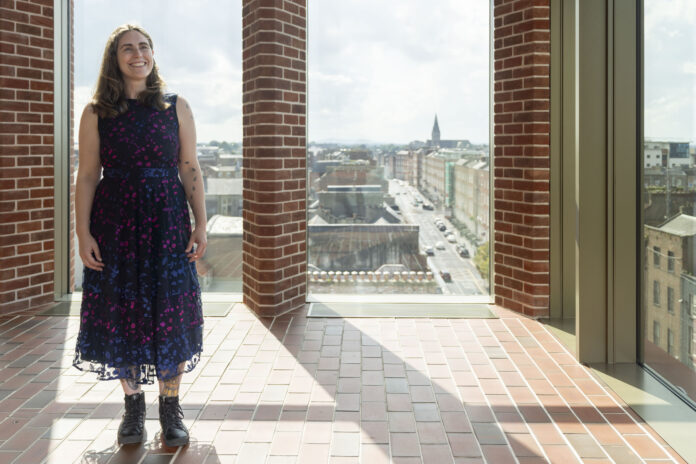
200 YEARS ago, in 1824, Limerick was at the height of its Georgian splendour. A generation had seen the development of the Newtownpery, and watched the walls of the old English and Irish Towns be demolished. All was not equal though. Only a small section of the population could vote or be elected, which led to the power in local government being held by the elite few who had no reason to change the status quo. It would take another five years before Catholics were allowed to sit in parliament.
The effects of the rising rents led to agrarian aggression by the Rockites in West Limerick, kicking off conflict that would last from 1821 to 1824 and see over 100 executions throughout the country and around 600 Rockite rebels transported to Australia.
In April 1824, a John Keays of Ballyvologue near Kilmallock was served with a notice from the Rockites ordering him to dismiss some of his labourers or he would receive an “ignominious death”. He survived the threat, so perhaps he did as he was asked.
Despite this, Limerick was bustling and the news reports from the year tell of the triumphs and tragedies witnessed by the citizens of this growing city and county. These reports, however, were aimed at those who were literate and bias towards those with wealth. Some things never change.
Henry Watson of Glentworth Street was in the middle of his three year run as mayor. Watson would sit on the corporation for about 40 years and had the distinction of being mayor both before and after the reform of the institution.
Watson met his death in 1860 after a failed surgery to remove a fish bone lodged in his throat. As the owner of the Limerick Chronicle for many years, he was free to dictate his own media locally.
A growing city
A number of new additions were made to the city and surrounding area in 1824. Athlunkard Street was created after the removal of a section of wall. Further out, the Plassey Mills along the banks of the Shannon near the Black Bridge was erected by Major Hodge Maunsell. This building was six storeys high and took advantage of the 10 foot drop from the water race behind it into the Shannon, making it one of the most productive mills in the area at the time.
The United London Gas Company was contacted to light the city in 1824. Public lighting was not new to Limerick, the first street lamps were erected in 1696 but this new addition helped to illuminate the city streets.
The streets themselves though were not always in the best repair, as could be attested in July when a post-chaise driving down Catherine Street met an accident. A vault had been opened in the street and there was no watchman or fence to alert the public to danger. The driver and horses of the post-chaise flew into the large hole when the vehicle came in contact with it.
The post office was based on Lower Cecil Street, just as it is today, but in 1824 it was opened daily from nine in the morning until eight in the evening. The post would arrive from Dublin with letters from England and further afield at eleven each morning.
Business in 1814
Of the seven hotels in the city recorded in Pigot’s Trade Directory that year, three were run by women – namely the Cork Hotel, Denmark Street, run by Bridget McNamara; Glenn’s Hotel, William Street, run by Margaret Glenn; and the Mail Coach Hotel (better known today as Cruise’s Hotel), run by Eliza Moriarty.
Women were also in charge of some more unusual businesses, such as Catherine Kenny of Thomondgate who was a lime burner and salt manufacturer, and Mary Faulknew of Merchant’s Quay who was a block and pump maker.
Getting around
If a person needed to travel to Dublin, the best option was by boat through the canal system.
Thomas Goodbody had three boats a week making the journey, while George Smith and Cornelius Nash both had a boat run weekly.
There were also two boats a week traveling to Kilrush and one of three ships sailing fortnightly to London.
A person in Newcastle West wishing to travel to Limerick City could board the mail car at five every morning and return at half past four in the afternoon, while those in Kilmallock could avail of a light coach to the city each Tuesday, Thursday, and Saturday afternoon at three.
Having a ball
Balls were all the rage in both the city and county. In early February, John Peace, who was associated with St Mary’s Cathedral, held a concert and ball at Mrs Helm’s ballroom on Brunswick Street (now Sarsfield Street). It was noted that good fires would be lit and the room would be illuminated with wax candles. A Mr Carr held his ball on February 16 in his rooms on William Street.
In Newcastle West, a ball at the end of January gathered about 70 people, again note was made that the room was lit with wax candles but here lamps too helped the revellers see while dancing into the small hours of the morning.
Balls were not the only form of entertainment, as, on May 3, Signor Angellotti brought his assortment of performing monkeys to the city. Also with him was a small child who was described as a three-year-old girl who exhibited feats of agility and tumbling.
Life and death
Thomas Little and his wife were authors of books about reproduction which were advertised in Limerick. They included titles such as “The Beauty, Marriage Ceremonies, and Intercourse of the Sexes, in All Nation”. It is possible, though unlikely, that the unnamed women in Manister who gave birth to quadruplets, two boys and two girls, in August of that year, read those books.
1824 also saw several noteworthy births. The first, Joseph Kidd on February 15, had at least 15 siblings. After medical training locally and in Dublin, he moved to London to join the Homoeopathic Hospital. Almost immediately he returned to Ireland to help victims of the Potato Famine. He became the personal physician to Benjamin Disraeli, as well as a previous focus of this column.
The next notable birth was that of civil engineer and architect William E Corbett on April 19. He designed many structures in Limerick, including Tait’s Testimonial Clock in Baker’s Place.
A few days later, on April 23, William Nash was born in Newcastle West. He was an Irish recipient of the Victoria Cross, the highest and most prestigious award for gallantry in the face of the enemy that can be awarded to British and Commonwealth forces.
The other end of the lifecycle saw the death in February of Laurence Durack in Tarbert, the once owner of the Windmill of Windmill Street. His burial in St John’s Churchyard, John Square, caused a religious ruckus. This burial place was part of the Protestant religion and, as such, Roman Catholic burial could not be carried out there legally. This did not stop Rev McCarthy, the Catholic parish priest of Tarbert, from officiation at the graveside.
The vicar of St John’s, Rev John Fitzgibbon, arrived on the scene and insisted that the priest desist as he was breaking the law. The mourners who had gathered let out cries of ‘Go on, we will die to a man, until you finish’ as the priest continued. Fitzgibbon called for the military to protect him in his churchyard, but soon dismissed himself as he felt he had some all he could to prevent a violation of the law.
The death of Valentine Richard Quin in August 1824 raised his son Wyndham Henry Quin to the rank of the 2nd Earl of Dunraven with his seat in Adare Manor. The 2nd Earl was responsible for many of the distinct features associated with Adare Manor today.
Unlike today, the causes of death were often up for interpretation and not an exact science. Darby Madigan from Glin had been confined to the County Jail in early February for illicit distillation – it is unknown if the consuming of his own spirits caused his death by the “visitation of God” in the jail. This was one of the most common verdicts of death issued after a body was discovered without visible wounds.
Meanwhile, other deaths were not as easily explained. In January 1824, Mary Mulcahy, of Merchant’s Quay, died suddenly “while in the act of bathing her feet”. She is one of the few known people to be buried in St Michael’s Graveyard off Michael Street.
Here we sit 200 years later, reading over the stories of the past, imagining the lives that once were, the loves and fears that have always been part of the human experience and, despite time, will continue to be.








